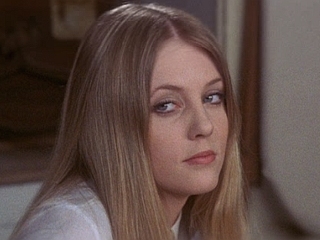AFED #56: Stachka [Strike] (USSR, 1925); Dir. Sergei Eisenstein
Like many people I like nothing more on a Friday night than to relax with a work of Russian Constructivist cinema. There's just something about rousing Soviet agit-prop that says "the weekend starts here". If you disagree well that's obviously because you're a bourgeois individualist, an anachronism destined to be swept away by the inexorable tide of communism.
Strike was Sergei Eisenstein's feature debut, at the disarmingly young age of 26 he found himself spearheading the new Soviet film drive with what was meant to be the first of seven (some sources say eight) films intended to chronicle the path towards the proletariat dictatorship. The remainder of the series were never completed but the director demonstrated enough talent to be commissioned to produce the even more celebrated Battleship Potemkin later that year.
Strike centres around an uprising of workers at an unspecified factory in Russia in 1903 (i.e. some years prior to the Revolution). The slothful, venal factory bosses (they're the ones whose faces are caricatures of malice) are spying on the workers and deploy an array of agents to infiltrate them and cause mischief.
When one of the workers is accused of stealing a piece of equipment worth three weeks wages he is driven to hang himself on the shop floor. The workers revolt and, as the title suggests, go on strike. The factory bosses refuse to accede to their demands for improved pay and working conditions, while the workers grow increasingly desperate as food and money run out.
In a bid to stir up further trouble the bosses recruit the services of an exotic underworld figure, 'King', who deploys his underlings to loot and set fire to a store in the hope of incriminating the strikers. When the workers realise its a trap and attempt to flee they are set upon with the firemen's hoses before the military launch a full scale assault in brutal climax.
Although widely respected overseas Eisenstein had a somewhat fractious relationship with the Soviet authorities over the years. His critics felt that the director should adhere to the more stoic aesthetics of the socialist realist school rather than his virtuoso approach to narrative. In retrospect this is what makes his work still so exhilarating today, although the pontificating now seems rather heavy handed. We are drawn into the workers' struggle, their rage at the injustice they duffer, the collective rise to action and escalation into hostilities. It plays like a textbook account of civil insurrection and continues to serve as an inspiration for film-makers (see Romero's Land of the Dead for a recent example).
What I found most impressive was the director's visual flair. The film's most famous moment is the cross-cutting of the military's violent attack on the workers at the climax with cattle being slaughtered by way of metaphor, one of the definitive examples of Eisenstein's montage technique. Yet there are other images - such as the dwarves in evening dress dancing on a dining table, or the moment when King's henchmen climb out of a collection of giant barrels - that suggest a surrealist sensibility.
One imagines that the strictures of serving communism were both a challenge and frustration to Eisenstein's creativity, and it's fascinating to imagine how he might have operated in a different environment. I'd like to look at his last film, Ivan the Terrible, later in the year so I'll leave it there for now. But seriously, if you've never checked out either this or Battleship Potemkin then you really need to catch up.
Strike was Sergei Eisenstein's feature debut, at the disarmingly young age of 26 he found himself spearheading the new Soviet film drive with what was meant to be the first of seven (some sources say eight) films intended to chronicle the path towards the proletariat dictatorship. The remainder of the series were never completed but the director demonstrated enough talent to be commissioned to produce the even more celebrated Battleship Potemkin later that year.
Strike centres around an uprising of workers at an unspecified factory in Russia in 1903 (i.e. some years prior to the Revolution). The slothful, venal factory bosses (they're the ones whose faces are caricatures of malice) are spying on the workers and deploy an array of agents to infiltrate them and cause mischief.
When one of the workers is accused of stealing a piece of equipment worth three weeks wages he is driven to hang himself on the shop floor. The workers revolt and, as the title suggests, go on strike. The factory bosses refuse to accede to their demands for improved pay and working conditions, while the workers grow increasingly desperate as food and money run out.
In a bid to stir up further trouble the bosses recruit the services of an exotic underworld figure, 'King', who deploys his underlings to loot and set fire to a store in the hope of incriminating the strikers. When the workers realise its a trap and attempt to flee they are set upon with the firemen's hoses before the military launch a full scale assault in brutal climax.
Although widely respected overseas Eisenstein had a somewhat fractious relationship with the Soviet authorities over the years. His critics felt that the director should adhere to the more stoic aesthetics of the socialist realist school rather than his virtuoso approach to narrative. In retrospect this is what makes his work still so exhilarating today, although the pontificating now seems rather heavy handed. We are drawn into the workers' struggle, their rage at the injustice they duffer, the collective rise to action and escalation into hostilities. It plays like a textbook account of civil insurrection and continues to serve as an inspiration for film-makers (see Romero's Land of the Dead for a recent example).
What I found most impressive was the director's visual flair. The film's most famous moment is the cross-cutting of the military's violent attack on the workers at the climax with cattle being slaughtered by way of metaphor, one of the definitive examples of Eisenstein's montage technique. Yet there are other images - such as the dwarves in evening dress dancing on a dining table, or the moment when King's henchmen climb out of a collection of giant barrels - that suggest a surrealist sensibility.
One imagines that the strictures of serving communism were both a challenge and frustration to Eisenstein's creativity, and it's fascinating to imagine how he might have operated in a different environment. I'd like to look at his last film, Ivan the Terrible, later in the year so I'll leave it there for now. But seriously, if you've never checked out either this or Battleship Potemkin then you really need to catch up.




Comments
Post a Comment